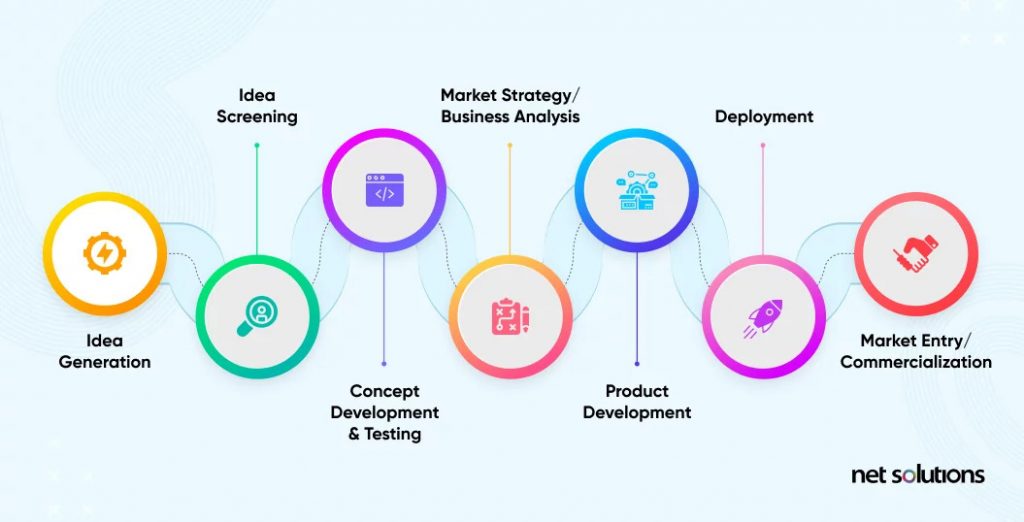Most startups launching a new product use a similar product development process, as shown in this illustration:

What’s wrong with this picture?
At first glance, this picture seems helpful and benign, illustrating a process of getting a new product into the hands of waiting customers. The process fits well with launching a new product in a market where the basics of competition are understood, and the customers and their needs are known.
The irony is that few startups meet these criteria. Few know what their market is. Let alone to the point. Yet startups continue to use the process, not only to plan product development, but also as a roadmap for timing their business case and marketing and sales activities.
The biggest risk in startups is not in product development, but in customer and market development. Startups do not fail because they do not have a product; they fail because there is not enough demand for it.
Using product development as a guide forces marketing and sales to focus on the first release. People look at that first date and then work backwards to figure out how to get their work done in time for the magic moment to begin on the day the product is launched.
But the date of first delivery to the customer does not mean that the company understands its customers or knows how to market and sell to them. Yet in some startups, ready or not, the marketing and sales staff are busy tuning their watches to the date of the first delivery to the customer. Worse, the startups’ investors also manage their financial expectations on this date.
Focusing on the first launch results in a “Fire, Ready, Aim” strategy. Obviously, you want the new company to market and sell a product, but you can only do that if you understand who you are selling your product to, who influences the buying process and why they will buy it. The product development process is so focused on building and shipping the product that it ignores customer development – and that often leads to failure.
If product development shouldn’t guide startups, what should? Well, Gritd’s StartupFramework© builds on Steve Blank’s methodology and is designed to build products that customers are waiting for. Whereas the product development process focuses on the initial launch, this framework moves into life stages one and two on learning and discovery. Moreover, this framework is built on the idea that every startup has three definable milestones at the beginning, which in most cases cannot be accelerated by increased funding. More money is useful, but not in the first life stage.
You cannot create a market or customer demand where there is no customer interest. The good news is that customer-centric milestones can be defined and measured. If the milestones are crossed off in a logical order, the success rate of a startup is much, much higher. If you want to know more about these milestones, read about the StartupFramework© in the article I wrote on Gritd’s blog.




